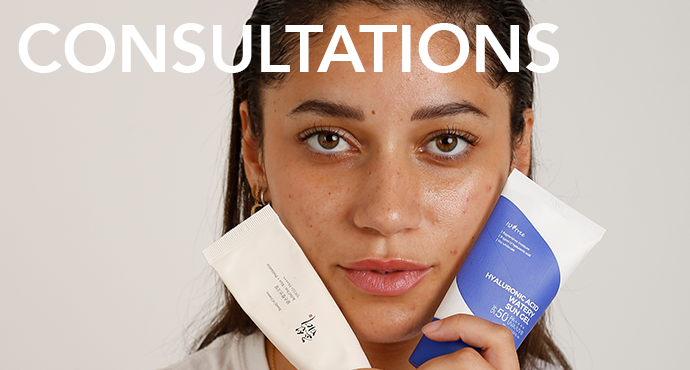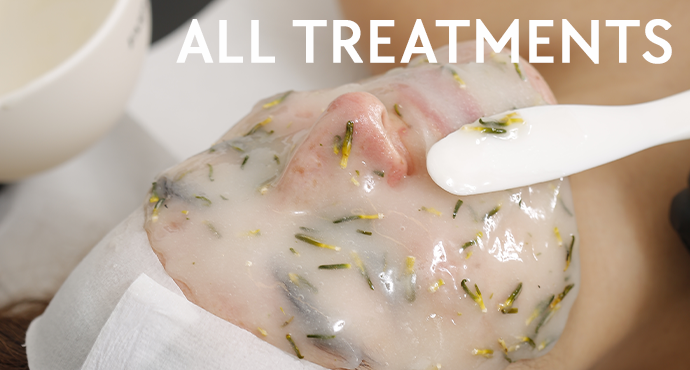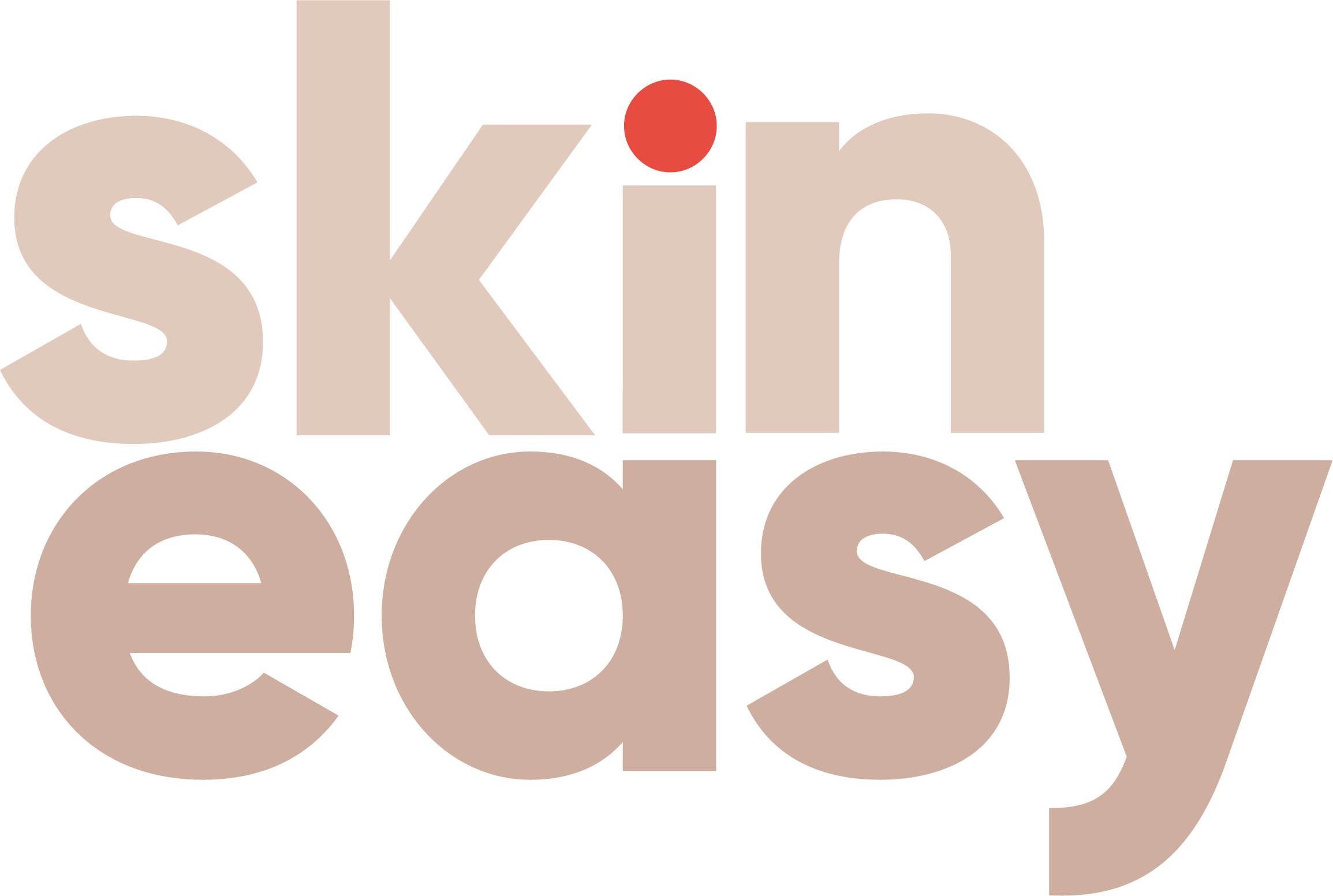A.
While acne commonly appears on the face, it can also occur on the back, chest, or shoulders. This skin condition arises when hair follicles located under the skin become blocked.
The skin has sebaceous glands that produce sebum, an "oil" released into hair follicles, where it travels to the pore before being expelled and spread onto the skin's surface. Its composition prevents skin dryness.
Sometimes, dead cells accumulate and clog the pore. Sebum can no longer escape: the hair follicle becomes blocked.
The mixture of dead cells and trapped sebum promotes the growth of bacteria. In response, the body defends itself by activating an inflammatory response (swelling, redness, pain, warmth).
When the wall of the blocked follicle breaks down, bacteria, skin cells, and sebum spread into the surrounding skin, leading to pimples.
Acne often leaves visible traces of its presence. Particularly severe or prolonged acne can alter the color and/or texture of the skin. Mostly present on the face, these scars negatively impact self-esteem and are a source of aesthetic concern.
To effectively reduce them, it's important to distinguish between them:
- Pigmented spots (brown): Flat and brown to black depending on skin color, they appear following a lesion or inflammation. An inflammatory episode, such as acne, stimulates melanin production, leading to localized pigmentation. Brown spots are more common in medium to dark skin types.
- Erythematous spots (red): Caused by the dilation of blood vessels, they are more visible on fair skin. They usually appear after inflammation, hence their other name "post-inflammatory erythematous marks.
- Atrophic Scars: Cutaneous inflammation activates collagen production. This protein provides structure to the skin, giving it elasticity and promoting tissue repair. During healing, the body sometimes produces too little collagen. The scar then appears hollow. Several types of atrophic scars are distinguished:
o "Ice pick" scars: These deep, narrow, pitted scars look like small V-shaped holes in the skin. They are one of the most common type of acne scars.
o "Boxcar" scars: These scars have well-defined edges and an angular shape. They often look like round or oval craters.
o "Rolling" scars: They create a wavy or rippling appearance on the skin's surface. Although shallow, they cover a larger area.
- Hypertrophic scars or keloids: unlike atrophic scars, these appear as a result of excess collagen production during the healing process. They are raised, thickened and often reddish or darker in color.
💡 Complete elimination of acne scars can be challenging, but several treatment options can improve their appearance:
👉 Topical Treatments: Some creams, gels, or ointments containing ingredients such as retinoids, alpha-hydroxy acids, or silicone.
👉 Chemical Peels: Remove the damaged top layer of skin to promote the growth of smoother new skin.
👉 Microdermabrasion: Using tiny abrasive particles to exfoliate the skin's surface.
👉 Laser Therapy: Different types of laser treatments, such as fractional laser or pulsed dye laser, stimulate collagen production and improve scar texture.
👉 Dermal Fillers: Enhance atrophic scars to make them less visible.
👉 Microneedling: Creates tiny wounds in the skin to stimulate collagen production and improve the appearance of the scars.
👉 Surgical Procedures: Punch excision or subcision may be recommended to treat certain types of acne scars.
Of course, the choice of treatment depends on the severity and type of acne scars. Skin type and individual preferences should also be taken into account.
B.
An open comedo, more commonly known as a "blackhead," is a common form of acne lesion.
Unlike acne cysts or pustules, the top of the blackhead is open to the surface of the skin. The obstructed material is therefore in contact with the air and oxidizes, turning black - hence the term "blackhead." They are generally not inflamed and therefore not as painful as other acne lesions.
Factors Increasing the Risk of Blackheads:
- Excessive Sebum Production : This can be natural or related to hormonal changes during adolescence or menstrual periods, for example.
- Accumulation of Propionibacterium acnes bacteria on the skin.
- Irritation of Hair Follicles: Occurs if dead cells are not regularly removed.
- Use of Birth Control Pills or medications that influence hormone levels.
Blackheads are a prevalent type of acne. They can appear on various parts of the body but are most often found in the T-zone: forehead, nose, and chin. These areas produce more sebum, thus the hair follicles there are more likely to be blocked.
💡 Treating Blackheads:
👉 Gentle Extraction: Proper skincare and hygiene practices are usually sufficient to clear them. Using a comedone extractor is particularly effective in most cases.
In cases of persistent or severe acne, consulting a dermatologist is recommended to receive professional advice and tailored treatment options.
Body acne manifests as the appearance of pimples, blackheads, or whiteheads, similar to those found on the face. The chest, back, and shoulders are the areas most commonly affected.
Several factors contribute to its development:
- Increased sweating,
- Friction from clothing,
- Excessive sebum production.
💡 To minimize these skin manifestations, maintaining appropriate hygiene, engaging in regular exfoliation, and applying targeted treatments are recommended. A practical tip: take your shower immediately after exercising, using a cleanser containing salicylic acid, for example.
D.
Purple or Blue Dark Circles
Causes: Thin skin, skin aging, lack of sleep.
💡 Solutions: Get enough sleep if fatigue is the issue, use caffeine-infused products to stimulate blood circulation, consider semi-permanent tattoos.
Pigmented Dark Circles
Brown or dark circles, either genetic or resulting from hyperpigmentation.
Causes: Genetics, sun exposure to UVA and UVB without sunscreen, eye rubbing, irritations (e.g., aggressive makeup removal).
💡 Solutions: Use SPF, retinoids, caffeine, and avoid rubbing or irritating the eyes!
Hollow Dark Circles
Gently press on a dark circle by pushing it upwards. If the color disappears, it indicates a hollow dark circle.
Causes: Naturally thin skin, skin aging.
💡 Solutions: Hyaluronic acid injections, fat grafting for dark circles.
Full Dark Circles (Bags)
Causes: Fat displacement, skin aging (tissue laxity, gravity).
💡 Solutions: Cheek lifting, surgery.
Puffy Eyes
Eyes may appear puffy in the morning and de-puff throughout the day.
Causes: Dry eyes, allergens, dehydration, fatigue, stress.
💡 Solutions: Apply cold spoons, stay hydrated, and ensure adequate sleep.
Dry skin, or xerosis, is characterized by a rough, tight, scaly appearance, accompanied by itching and sometimes cracks. This common condition results from a lack of moisture or adequate hydration, and several factors contribute to its occurrence by stripping the skin of its natural oils.
Causes of Dry Skin:
- Environment: Dry or low-humidity atmospheres, particularly prevalent in cold weather, can sap moisture from the skin.
- Age: As the skin ages, it thins and produces less sebum, increasing vulnerability to dryness.
- Atopy: Skin conditions such as eczema, psoriasis, and ichthyosis often lead to chronic dryness.
- Medical Conditions: Disorders like diabetes and hypothyroidism can affect the skin's moisture barrier.
- Medication Side Effects: Certain drugs can reduce skin oil production or promote dryness.
- Dehydration: Insufficient water intake can lead to overall dehydration, impacting skin health.
- Hot Showers and Harsh Soaps: These can strip away natural oils more quickly.
💡 Tips to Manage and Prevent Dry Skin:
👉 Deep Hydration:
👉 Use a Humidifier: When the climate is dry, employing a humidifier can help restore the air’s moisture, benefiting your skin.
👉 Gentle Cleansing:
👉 Respect Your Skin:
A lack of radiance, brightness, and a tired-looking skin without relief signal a dull complexion. But how do we end up with this lackluster skin?
Causes of a Dull Complexion:
- Lack of Exfoliation: Accumulated dead cells on the skin’s surface obscure its natural glow.
- Dehydration: Insufficient water intake or poor moisturizing habits leave the skin dry and dull.
- Overexposure to the Sun: Excessive UV rays damage the skin, directly impacting the clarity of our complexion.
- Aging: As we age, the skin's production of collagen and elastin decreases. These essential compounds provide elasticity and firmness, and their depletion reduces skin radiance.
- Poor Lifestyle Choices: A diet low in essential nutrients, stress, smoking, excessive alcohol consumption, and insufficient sleep all negatively impact skin health, contributing to a dull appearance.
- Skin Conditions: Conditions like eczema, psoriasis, or rosacea can cause redness and inflammation, further affecting the skin’s appearance.
💡 How to Achieve Healthy and Radiant Skin:
👉 Skincare Routine:
👉 Balanced Diet:
👉 Protect Your Skin:
E.
This oily or waxy substance primarily hydrates and softens the skin. However, genetics, hormonal fluctuations, certain medications, or other environmental factors can lead to an overproduction of sebum. This results in excess sebum, also known as seborrhea or hyperseborrhea.
What are the repercussions?
- Oily skin: This is one of the most common consequences of excess sebum. When present in excessive amounts, it gives the skin a greasy or oily appearance. The skin appears shiny and feels smooth to the touch.
- Acne and pimples: Excess sebum can clog hair follicles and pores, leading to acne. Blackheads, whiteheads, and pimples emerge!
- Enlarged pores: Over time, excess sebum can stretch and widen pores, making them more visible to the naked eye.
F.
You've likely encountered flaky skin without knowing its specific name, whether through peeling after a sunburn or experiencing dandruff. In both scenarios, this involves the shedding of skin flakes.
Why Do We Have Flakes?
Flakes are fine strips of dead skin that detach from the surface. They most commonly appear in cases of dry skin or as part of pathologies like eczema or psoriasis. These clusters of dead cells are crucial components of the skin.
Produced continuously in the deeper layers of the epidermis, they progress toward the surface as new cells form. Once reaching the surface, they flatten out and form an impermeable barrier thanks to the keratin they produce. This squamous layer plays a vital role in regulating moisture loss and preventing the entry of harmful microorganisms.
Eventually, these squamous cells shed to make way for newer, fresher cells. This shedding is part of the skin's constant renewal process.
H.
Hormonal imbalances can significantly impact the skin.
Here are some conditions with hormonal origins that affect skin health:
- Polycystic Ovary Syndrome (PCOS): The increase in androgen levels associated with this condition often leads to acne.
- Thyroid Disorders (Hypothyroidism and Hyperthyroidism): An underactive thyroid can result in rough skin, while an overactive thyroid may make the skin thin and moist.
- Diabetes Mellitus: When not well-controlled, diabetes can affect the skin by causing dryness, slow wound healing, and increased risk of infections.
- Adrenal Insufficiency (Addison's Disease): Insufficient production of adrenal hormones, such as cortisol, leads to skin changes, particularly hyperpigmentation in sun-exposed areas.
- Menopause: Linked to significant hormonal changes, menopause brings about profound transformations in the body. For example, the decrease in estrogen levels leads to thinner skin and increased sensitivity to dryness, wrinkles, and fine lines.
- Endometriosis: Hormonal imbalances associated with this condition contribute to the appearance of acne during menstrual periods.
This list is not exhaustive but presents some common trends. Reactions to hormonal changes are unique to each individual.
💡 If you notice skin issues and suspect a hormonal imbalance or a condition, it is crucial to consult a healthcare professional or a dermatologist. This way, you can receive an accurate diagnosis and appropriate treatment.
Hyper" means beyond; hyperpigmentation refers to an abnormal concentration of pigment, melanin. Appearing as spots and considered unattractive, these marks do not enhance self-confidence.
Several types can be distinguished:
- Pigmented spots (brown): Flat, ranging from brown to black depending on skin color, they appear following an injury or inflammation. An inflammatory episode, such as acne, stimulates melanin production, causing a local increase in pigmentation. Brown spots are more common in mixed to dark phototypes.
💡 How to reduce their appearance? Apply daily care products containing the following active ingredients: azelaic acid, arbutin acid, niacinamide, vitamin C, chemical exfoliants (AHA, BHA, and PHA), retinoids. If these are not sufficient, certain procedures can be performed by a dermatologist: chemical peels, laser treatment, prescription of hydroquinone, or use of intense pulsed light.
- Erythematous spots (red): Caused by the dilation of blood vessels, these are more visible on fair skin. They usually appear after inflammation, hence their other name of "post-inflammatory erythematous marks."
💡 To manage these spots, keeping the skin well-hydrated is essential. Products with highly hydrating ingredients like aloe vera, glycerine, hyaluronic acid, and polyglutamic acid can be applied.
- Freckles: These are small areas of increased pigmentation, often of genetic origin. They become more visible with sun exposure.
- Melasma: Characterized by brown or grey spots on the face, often on the cheeks, forehead, and upper lip. Often linked to hormonal changes, such as pregnancy or the use of contraceptives. This is the famous "pregnancy mask" you may have heard about.
- Solar lentigines (sunspots): Also known as age spots or liver spots, these marks gradually appear on areas of the skin exposed to the sun.
💡 As you've understood, hyperpigmentation is directly related to melanin production. The synthesis of this pigment is especially activated by sun exposure. To limit their appearance, do not neglect the application of sunscreen on exposed areas.
The body can produce too much melanin (hyperpigmentation) or not enough, which is known as hypopigmentation. Since melanin is responsible for skin coloring, a deficiency leads to a visible change in its appearance.
Hypopigmentation is characterized by skin that appears lighter, sometimes almost white, compared to the surrounding areas. It manifests in the form of spots or more extensive patches.
The appearance of hypopigmentation can be attributed to various causes, including:
- Hypopigmented Birthmark: While we often think of birthmarks as brown or pinkish, there are also lighter ones. These can be present from birth or develop during childhood.
- Post-inflammatory Hypopigmentation: After an injury, inflammation, or a skin condition, the skin may locally lose pigment as it heals.
- Pityriasis Alba: This benign skin condition primarily affects children and adolescents. It is characterized by the appearance of pale, scaly patches.
- Pityriasis Versicolor (or Tinea Versicolor): This benign skin condition, caused by a fungus, is generally harmless to the skin but can cause hypopigmented patches to appear in some individuals.
- Vitiligo: In this chronic skin disease, the immune system attacks and destroys melanocytes, the cells responsible for melanin production. This results in a loss of pigmentation in the affected areas, manifesting as white patches on the skin.
- Exposure to Chemicals: Contact with certain chemicals or substances, such as some cosmetics or harsh skin treatments, can sometimes lead to hypopigmentation.
I.
You may have experienced this: a hair grows under the skin instead of rising to the surface. It can also curl back on itself. Generally, ingrown hairs are more common in areas that are shaved or waxed: face, neck, armpits, legs, and bikini area.
Causes of Ingrown Hairs:
- Hair Removal Method: Shaving, waxing, or tweezing can create sharp ends on the hair, making it easier for the hair to penetrate back into the skin.
- Clothing: Wearing tight clothing irritates the skin and promotes ingrown hairs.
- Hair Type: People with curly hair are more prone to ingrown hairs.
Consequences:
Inflammation, redness, and sometimes even infection are common outcomes of ingrown hairs.
💡 Tips to minimize their occurrence:
👉 Regularly Exfoliate: This removes dead skin cells from the surface, clearing the way for the hair to exit the follicle.
👉 Shave Gently:
👉 Deeply Moisturize:
👉 Protect Your Skin:
K.
Far from being a health threat, keratosis pilaris is mostly a cosmetic concern, often referred to as "chicken skin".
How can you recognize it?
- Appearance: Small, flesh-colored or slightly red bumps that are rough to the touch.
- Location: Primarily on the arms, thighs, cheeks, or buttocks.
- Characteristics: Generally non-inflammatory but can cause itching. Keratosis pilaris occurs when an excess of keratin blocks hair follicles. Factors such as dry skin, genetics, or a history of eczema can intensify the condition.
💡 How to reduce it?
👉 Moisturize: Ensure your skin remains hydrated by regularly applying moisturizing creams.
👉 Gently Exfoliate: Remove dead skin cells to help unblock hair follicles.
👉 Treat: Use specific creams containing ingredients like urea, lactic acid, or salicylic acid that can help reduce the bumps.
👉 Adapt: Avoid hot showers, opt for mild soaps, and wear loose clothing to reduce irritation and prevent further clogging of hair follicles.
R.
As the name suggests, redness refers to when the skin turns red or even bright pink. Dermatologically, this condition is called "erythema."
This abnormal yet common coloring occurs when the blood vessels close to the surface of the skin dilate, resulting in a greater amount of blood flowing to that area, creating the characteristic redness.
Common Causes of Redness:
- Inflammation: Triggered when the skin is injured, irritated, or infected, causing the immune system to activate blood vessel dilation to transport immune cells to the area. This is particularly visible in cases of sunburn, contact dermatitis, or acne.
- Allergies: The immune system also reacts to allergens such as foods, medications, pollen, and dust mites, often resulting in skin redness.
- Atopy: Skin conditions like rosacea, eczema, and psoriasis commonly cause chronic redness.
- Vascular Disorders: Conditions like telangiectasia or spider veins directly cause persistent skin redness.
- Infections: Bacterial, viral, or fungal attacks on the skin prompt the immune system to trigger inflammation, which results in redness.
- Emotional and Physical Factors: Emotions, temperature changes, or physical exertion can also temporarily color the skin.
💡 Managing Skin Redness:
👉 Respect Your Skin:
These insights provide a foundational understanding of skin redness and practical steps for management. Identifying the specific cause in each case can significantly improve the effectiveness of treatment.
Rough skin is characterized by an uneven, coarse texture. It may feel bumpy or irregular to the touch. Here are some of the most common causes:
- Dry Skin: Normally, sebum and natural hydration give the skin a smooth and supple appearance. When the skin is not adequately hydrated, it becomes flaky and prone to rough patches.
- Environment: Factors like wind, cold, and sun can lead to prolonged exposure that dries out the skin and makes it rough.
- Keratosis Pilaris: This condition is recognized by small, rough bumps on the skin, often located on the arms, thighs, or buttocks, resembling goosebumps. It involves an accumulation of keratin, the protein that protects the skin.
- Over-exfoliation: While exfoliation is essential for eliminating dead skin cells and promoting skin renewal, excessive exfoliation can strip the skin of its protective barrier, making it rough.
- Atopy: Inflammation of the skin due to conditions such as eczema, psoriasis, or dermatitis is generally associated with a rough texture.
While rough skin does not pose serious health consequences, it is certainly not aesthetically pleasing. Treatment largely depends on its cause. In most cases, changing lifestyle habits and using appropriate skincare are sufficient.
Here are some tips to minimize the occurrence of rough skin:
👉 Deeply Hydrate:
👉 Gently Cleanse:
👉 Protect Your Skin:
👉 Consult a Dermatologist:
S.
Sebaceous filaments are completely natural. They are clusters of sebum and dead cells visible on the surface of the skin, most often found in areas with a large number of sebaceous glands—such as the nose, chin, and forehead, collectively known as the T-zone.
Sebaceous filaments are frequently confused with blackheads, which are bacterial in origin and considered a form of acne.
Although they may not appear very attractive, sebaceous filaments play a crucial functional role for the skin. They help channel sebum from the sebaceous glands to the skin's surface, where it acts as a natural moisturizer. This process keeps the skin supple and hydrated.
Sebaceous filaments fill and reappear naturally over time, depending on sebum production. Sometimes, they become larger or darker and more visible, often due to excess sebum production.
💡 Depending on the skin type, it is sometimes possible to reduce the appearance of sebaceous filaments. Gentle exfoliation and the use of purifying products are often recommended.
Eczema, psoriasis, rosacea... You've probably heard these terms before. But often, we're not quite sure what they actually mean. Let's clarify that right now with a simplified glossary of skin diseases:
o Location: Face, chest, back.
o Trigger Factors: Hormonal changes, genetics, certain medications.
o Manifestation: Blackheads and whiteheads, sometimes cysts in severe cases.
- Eczema (Dermatitis)
o Location: Often in folds such as the neck, ears, elbows, knees.
o Trigger Factors: Family history of allergies, skin sensitivity reacting to excessive washing, cold and dry air, harsh cosmetic products, stress.
o Manifestation: Itching and red skin rashes.
- Psoriasis
o Location: Mainly the scalp, nails, and joints.
o Triggering Factors: The exact origin is unknown. There appears to be a genetic predisposition and factors such as stress, trauma, or certain medications that may trigger outbreaks.
o Manifestation: Red patches covered with white scales.
- Rosacea
o Location: Mainly on the face.
o Triggering Factors: Certain inflammatory foods or drinks, extreme temperatures, stress.
o Manifestation: Facial redness, visible blood vessels, small red bumps, pimples, dryness around the eyes.
💡 Some medicated creams and antibiotics can help control inflammation. Lifestyle adjustments to avoid potential triggers can be beneficial. In some cases, lasers or light treatments can reduce redness and visible blood vessels.
- Skin Cancer
o Location: UV-exposed areas.
o Trigger Factors: Excessive exposure to natural (sun) or artificial (tanning beds) UV rays.
o Manifestation: A new brown spot on the skin or a mole that looks different from the others. For more details, consult the Ameli website.
Stretch marks are lines that form on the skin during rapid stretching, often triggered by events such as puberty, pregnancy, or rapid weight gain. They most commonly appear on areas like the abdomen, thighs, buttocks, and breasts. Initially, these marks may present as red or purple but generally fade to a lighter shade over time.
Stretch marks are a natural part of life and skin changes. They do not pose any health risk, and while they may never disappear completely, they typically become less noticeable over time. Embracing them as part of your body’s history can also be a positive approach to self-acceptance.
💡 Preventing Stretch Marks:
👉 Moisturize the Skin: Keeping the skin well-hydrated makes it more elastic and less prone to tearing. Regular application of moisturizers can help maintain the skin’s pliability.
👉 Maintain a Healthy Lifestyle: Managing your weight and avoiding rapid weight fluctuations can reduce the risk of stretch marks. During pregnancy, it's particularly important to gain weight gradually as recommended by healthcare providers.
👉 Use Topical Treatments: Applying specially formulated creams and oils can aid in improving the appearance of stretch marks. Ingredients such as hyaluronic acid, tretinoin, and certain oils may improve skin elasticity. However, it's important to note that the effectiveness of these treatments can vary widely.
T.
When we discuss skin texture, we're referring to its quality and appearance. Is it smooth? Even? Pleasant to the touch? Variations in skin texture are influenced by a variety of factors, including genetics, age, lifestyle, and environment.
Factors Affecting Skin Texture:
- Roughness: Conditions like acne, dry skin, and scars can make the skin's surface irregular.
- Enlarged Pores: Large or clogged pores contribute to a rougher texture, while tighter and less visible pores help achieve smoother skin.
- Wrinkles and Fine Lines: The depth of wrinkles and fine lines can significantly alter the skin's texture, giving it a more aged appearance.
- Texture Irregularities: Any imperfections on the skin's surface, such as bumps or rough patches, contribute to variations in skin texture.
💡 Maintaining and Improving Skin Texture:
To maintain and improve skin texture, a thorough routine is essential:
👉 Cleansing: Regular cleaning helps remove dirt and excess oils that can clog pores and worsen skin texture.
👉 Moisturizing: Hydrating the skin helps to smooth out irregularities and provides a plump, healthy appearance.
👉 Exfoliating: Removing dead skin cells through exfoliation can minimize roughness and clear out clogged pores.
👉 Sun Protection: Constant protection against UV rays is crucial to prevent damage that can lead to texture irregularities.
W.
Wrinkles are a sign of the passage of time and an inevitable part of the natural aging of the skin. Their appearance is primarily due to the decrease in collagen and elastin, the key molecules responsible for skin firmness and elasticity. Without sufficient levels of these molecules, the skin sags, lines deepen, and wrinkles form.
While aging affects all of our skin, wrinkles and fine lines - thin wrinkles - are especially visible on areas where the skin is thin and exposed, such as the face, neck, and hands. Generally, there are two main types of wrinkles:
- Dynamic Wrinkles: Also known as expression lines, these appear according to facial expressions and muscle contractions.
- Static Wrinkles: These wrinkles are permanently present, regardless of facial expressions.
Although natural aging is a primary factor in the development of wrinkles, other elements can accelerate their premature appearance. Excessive sun exposure, smoking, and unhealthy lifestyles adversely affect skin structure and, consequently, its appearance.
💡 Tips to Slow Down and Delay the Appearance of Wrinkles:
👉 Sun Protection: Making sun protection a priority with the daily application of sunscreen, limiting sun exposure, and wearing UV-protective clothing is crucial.
👉 Topical Skincare Products: Ingredients like retinoids, antioxidants, and peptides are excellent allies for improving skin texture and reducing the appearance of wrinkles.
👉 Healthy Lifestyle: Maintaining a balanced diet, ensuring adequate hydration, getting sufficient sleep, and quitting smoking can significantly benefit the skin.
👉Dermal Fillers and Botox: These medical procedures can effectively reduce the appearance of wrinkles, particularly those related to facial expressions.
👉 Medical Procedures: For deeper wrinkles, more invasive treatments such as chemical peels, microdermabrasion, laser therapy, and even plastic surgery may be considered to achieve significant wrinkle reduction.





